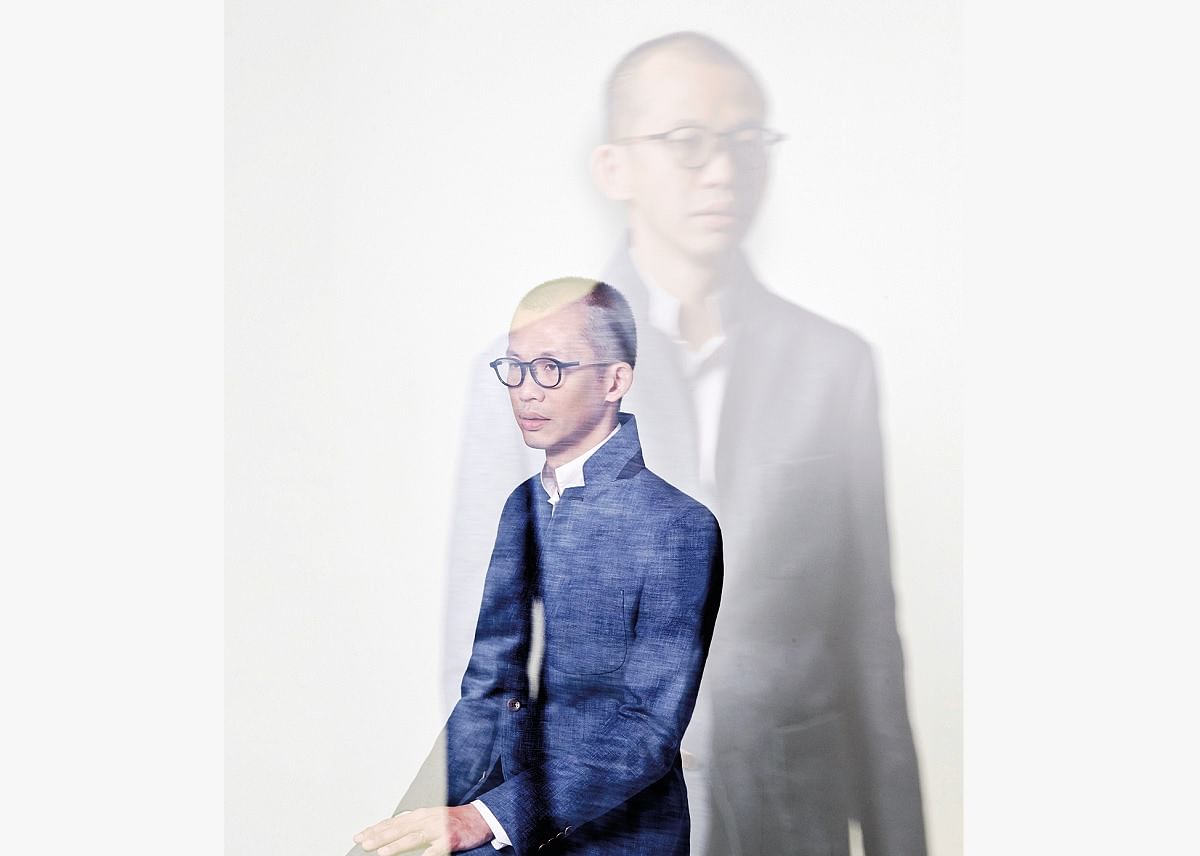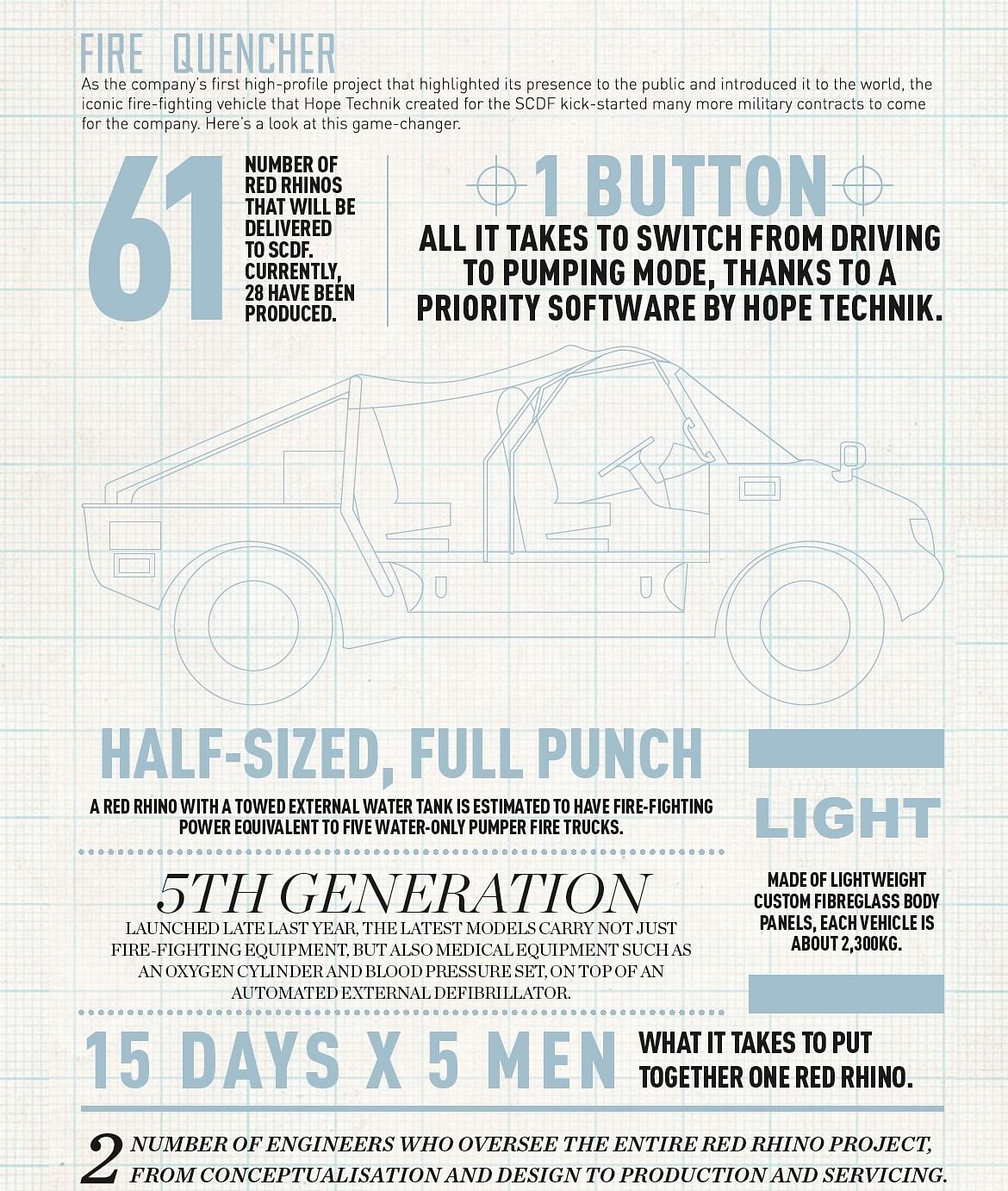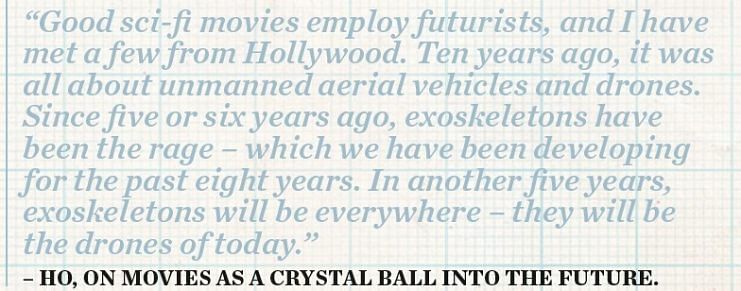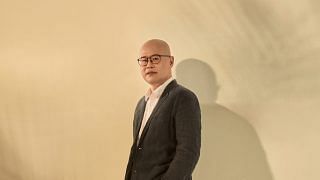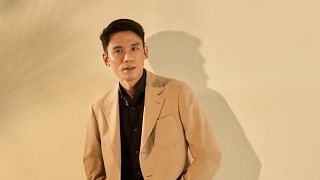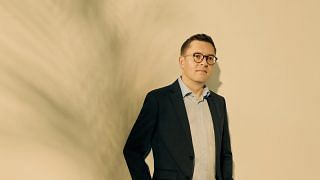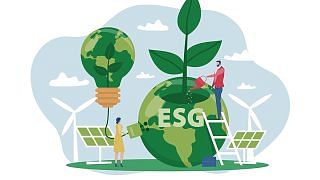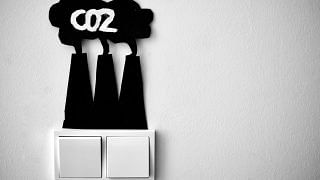[dropcap size=big]”T[/dropcap]his is what happens when you don’t have adult supervision,” says Peter Ho, with the look of a stoked class geek showing off his latest science fair-winning project. The lanky 38-year-old, with a toothy grin and a haircut so short it will put any NS boy to shame, isn’t showing off any particular piece though, but his entire facility.
The industrial block that houses his company Hope Technik is nondescript, if not for a handsome Red Rhino and a chilli red military-looking vehicle that is the size of a riot police truck parked in the front, uses classified. Men in black, Ho’s staff, are conducting ballistic tests on a canon-like contraption at an otherwise quiet Penjuru Close.
Step into the lobby and you will see a gamut of fascinating objects resembling drones, unmanned vehicles, and stuff that would not look out of place in a sci-fi movie. In place of a reception counter is a rock-climbing wall. A giant steel slide connects the second floor to the lobby.
The CEO and co-founder of Hope Technik, founded in 2006, isn’t kidding about a need for adult supervision. Clearly, he is working with a bunch of big kids – and he is the biggest kid of them all. “The other three founders and I have always wanted to do something that we really enjoy,” says Ho, as he walks us through rooms where all manner of futuristic fantasies can be found at every turn. At one workspace are exoskeletons that promise wearers superhuman strength, or even to teach stroke patients how to walk again. In another room, guys huddling over a prototype drone designed to assess oil spills look slightly alarmed either at the sight of us strangers/ intruders or Ho, but quickly return to their experiments. “This principle is what has allowed us to survive. We never forget the basics, which is to have fun.”
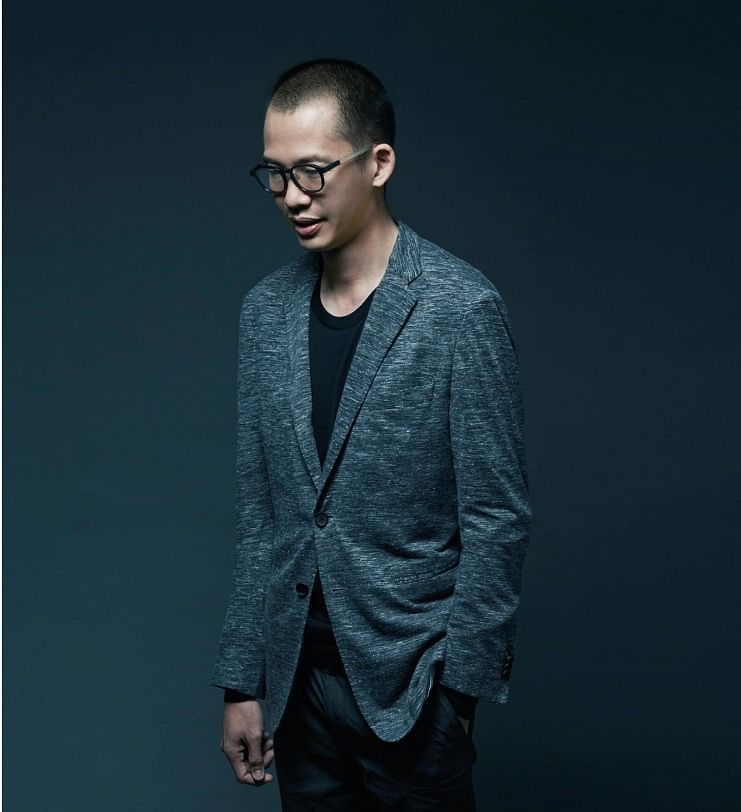
There are no official hours to clock in (“It is nice if the guys can get in before 10am”) for his 100 staff members, and Ho claims that there is an open alcohol policy (“They don’t trust me with the machinery because I usually have a beer in one hand”). Way before Google and Facebook offices landed on our shores, he had already built the dream playground – we mean, workspace.
Q TO THE WORLD
Ho’s geek jokes and cheesy bro humour aside, Hope Technik is involved in very serious business. Think of him as Q in James Bond – or at least a local, slightly ah beng version of him – except that he doesn’t design cool machines for one party, but for clients across the world, from automobile businesses and hospitals to the military.
You might know it for designing the Red Rhino fire-fighting vehicles for the Singapore Civil Defence Force (SCDF) – a design that he is looking to export. You might have also read about the 2012 multi-million-dollar deal with Airbus to design a plane prototype that would take travellers to the edge of space. The maiden flight was tested in 2014.
These are only the tip of the iceberg for the company that has delivered 350 contracts to 18 countries. Here’s why so little has been talked about it: almost half of the inventions Ho details to us are classified and, as for the other half, he shares their copyrights with his clients, and he isn’t in the business of stealing their thunder. “Thankfully, news gets around the industry and our clients know our work.”
Or maybe not. We are pretty sure some have not seen the inflatable device dressed up as a giant teddy bear, designed to hold down epileptic children, in turn protecting medical professionals from bodily harm. “Uh yeah… it looks a bit freaky but it’s the first prototype,” he says almost apologetically. In the staff lounge, a self-cobbled carframe for sitting in when playing POV racing games takes pride of place. The line between work and play is very, very fine.
But back to the serious stuff. It is betting on swarm artificial intelligence, useful in surveillance as well as search and rescue. Another huge investment is in Sesto, a set of technologies that aids the moving of heavy objects in confined spaces. It also develops robotics solutions for logistics companies and online retailers such as Redmart. Current annual revenue is about $10 million, which Ho expects to multiply 10-fold by next year. There are also plans to start an overseas subsidiary.
The work it does is wildly diverse, considering Hope Technik was set up to build race car pit equipment, Ho’s first love. However, business was so poor – Ho did not draw a salary for 15 months, racked up credit card debts of $40,000 and had to sell three classic cars that he owned – that the co-founders decided to take up any job they could get. Then came the Red Rhino project in 2009, which helped turn the business around. It did not matter that the work was not exactly in their area of expertise.“If something is deemed impossible, I will be the first to take it up.”
Hope Technik’s work today is significant cant not just by virtue of its diversity, but because of its worldwide impact. “Robotics today is not just about automation or manpower savings. It offers a solution for greater work and output consistency.”
Still, it isn’t a perfect future.“Robotics can be dangerous,”he cautions, as we walk past a contraption that resembles a giant-mechanical claw – a la what Doctor Octopus, the villain in Spiderman comics, sports on his back. “Those who can afford and adopt it early will have productivity advantage. This will widen income disparity.”
Then there’s the issue of ethics. “If a tree falls before an autonomous vehicle that you are in, should it drive you into a brick wall or mount a kerb and hit a group of kids? What is theright decision? It is an emotional argument when the human isn’t in control.”
Ho clarifies that he doesn’t take contracts to create offensive robots. “We are not hereto kill a person, though I didn’t say anything about maiming…”Does technology ever scare him? “No, because artificial intelligence and technology advancements do not appear suddenly.We know what is going tohappen. And we also know when to pull out the battery supply.”
(RELATED: Google’s new e-mail services can now reply on your behalf – taking us one step closer to true AI, perhaps?)
ENGINEER BEFORE BUSINESSMAN
“With the amount of alcohol in my system, I sleep very well!” says Ho with a laugh, when we ask if his conscience is clear,despite his many military contracts.“What keeps us up is the fact that robotics is no longer a niche industry and the number of competitors we have are growing more quickly than we can keep track of.”
Despite being the one who steers the business, Ho still sees himself as an engineer first and foremost. “I just say, okay, this is the kind of industry innovations that we should go into and this is the kind of technology that we are buying into. My weekend might be spent doodling a new design to impress the guys.Some say that is work, but myhobby is my work.”
He works – or plays, depending on how you see it – nearly 20 hours a day. After catching up on world news and clearing e-mail, he is usually out for his first meeting by 8am. Using the impossible traffic within the Jurong industrial park, where Hope Technik is located, as an excuse, he organises dinner meetings almost daily with staff for clients.
His staunch belief in thevalue of hard work was instilledfrom young. As a member of the Anglo-Chinese Junior College debating team, he would train overnight, sometimes going home at 5am only to head back again later that morning. “Our debate coach, Mrs Geetha Creffield, trained us intensively. She taught me to take on things competitively, not just locally and regionally – she wanted for us to win the world,” recounts Ho, who was Best Speaker at the Under-21 World Debates finals in New Zealand in 1996.
While Ho thinks that his oratorical skills – mapping out and presenting ideas logically,even knowing how to moderate the tempo of his speech and inject drama to his delivery – help in business negotiations, what he feels is more invaluable is learning to aim high, and being dogged and determined.
JOY DIVISION
We return to the lobby where the tour started. He breaks intoa slight grin and we realise whathe’s smiling at. Parked in fron tof his building is a head-turning silver-and-red Lotus Seven (even if his day-to-day ride is a typical towkay sedan of a Jaguar XF).“Compared to the latest machines,classic cars have an inimitable old-school mechanical charm and elegance.”
The son of a businessman in pest control and a homemaker mother started “building” cars out of Lego blocks as a kid, and by 25, the mechanical engineering graduate from National University of Singapore (NUS) became the chief engineer for Team Petronas’ Touring Cars. These days, he enjoys bringing vintage models back to life and fitting them with modern luxuries like air-conditioning.“The idea is to bring them back to what they were before, but just a little better.”
How does one who works 20-hour days find time to tinker with cars? By devising grand plans, such as escaping Chinese New Year visits on the pretext of work. Yet, on the rare weekend off with his wife, Ho couldn’t be a more different person. He takes a back seat, and he is quiet. “I try not to discuss work or bring work home. We eat. We watch TV. Go out with friends. My wife is a lawyer and her days are also long and difficult, so, on weekends, we just zone out. We queue up outside Din Tai Fung like everybody else and just watch the world go by. It is a necessary unwind, a digital detox of sorts,” reveals Ho, as he taps on his Android phone mid-interview,in an attempt to answer the 38 Whatsapp messages and seven e-mail messages that have come through in the past hour.
Ho also serves on the Consultative Committee at the Department of Mechanical Engineering, NUS, and sits on the board of Infocomm Development Authority of Singapore. Despite working with plenty of youth and providing opportunities for many others, he doesn’t see himself as an agent of change. “I just have the good fortune of being able to have a huge laugh out of what I do.”
“Everything in life is about attitude, which is one part of attributes – such as whether the person is responsible or hardworking. Knowledge can be learnt, experience can be gained, but attributes are hardwired in people.”
WHAT IS YOUR CURRENT STATE OF MIND?
Calm, despite it being the close of Day One at Singapore Airshow 2016, where I have been pulling out all the stops trying to sound intelligent. That said, I have also been drinking since 10am.
WHO DO YOU THINK IS THE MOST OVERRATED ARTIST?
No idea! I am your textbook nerd: I go to work, do whatever I need to do, go home, listen to BBC radio in the car and watch news channels at night. I have no friggin’ idea who is big right now.
YOUR IDEA OF PERFECT HAPPINESS IS…
Doing what I love with people whom I respect, and going home to a good family who supports that insanity.
WHO ARE YOUR HEROES IN REAL LIFE?
I remember meeting a very successful businessman whose humility rocked me to the core. I gave him a glass of water when he came to our office – and he went to the pantry to wash it afterwards. But his name escapes me now.
WHAT COMES TO MIND WHEN YOU HEAR THE WORD “UNDERGROUND MOVEMENT”?
The voice of the people.
WHAT ARTISTIC TALENT WOULD YOU LIKE TO HAVE?
I would love to learn to play the piano one day. I am completely tone deaf. I tried to sing at my wedding and my wife was like, no, no, no – maybe this is not the guy.
HAVE YOU EVER LIED ABOUT LIKING A CERTAIN WRITER OR ARTIST?
No. I am not with the trendy crowd!
IF YOU WERE AN ARTIST/ WRITER/ ACTOR, WHO WOULD YOU BE?
John Travolta, for having survived such a difficult career. He was in Saturday Night Fever and then went through a decline – yet he is still the man today. You know what, I’d rather be John Travolta. You can say that I am preparing for my mid-life crisis and the life after that.
WHEN WAS THE LAST TIME YOU FELT TERRIFIED?
Uh… I can’t remember. Engineers tend to classify things methodically so I can find reason for everything – or I try to.



